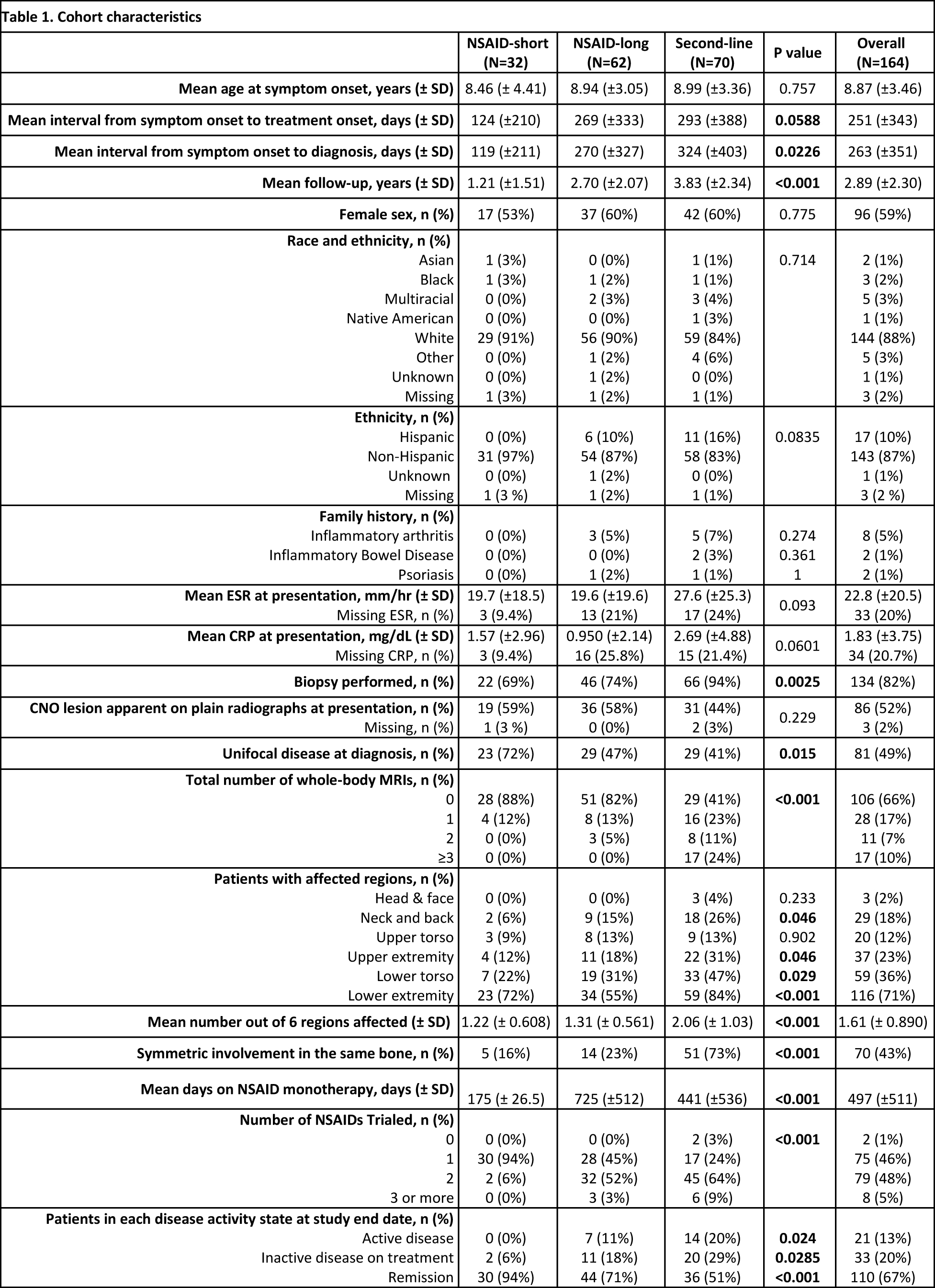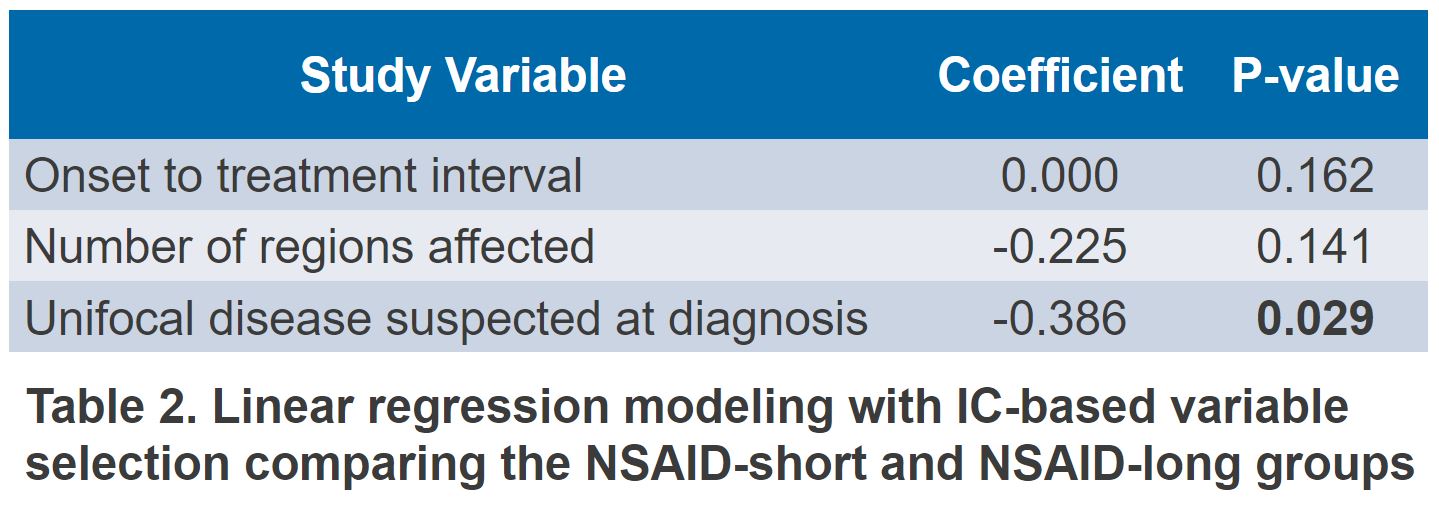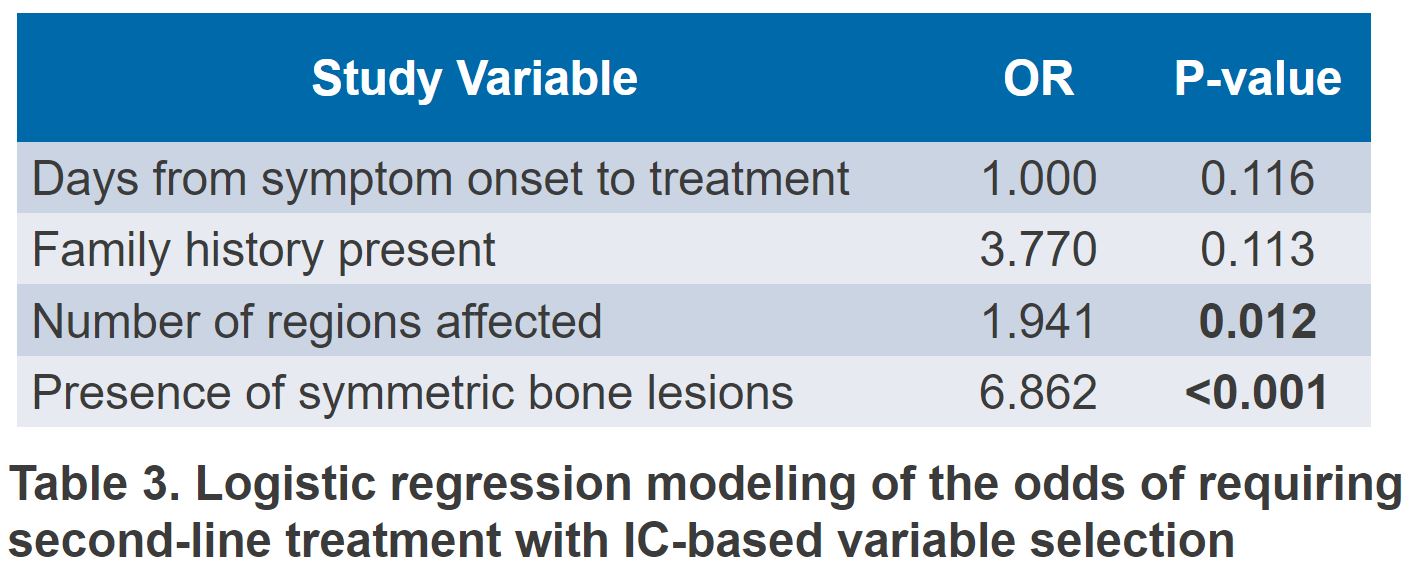Session Information
Date: Tuesday, November 14, 2023
Title: (2039–2060) Pediatric Rheumatology – Clinical Poster III: Potpourri
Session Type: Poster Session C
Session Time: 9:00AM-11:00AM
Background/Purpose: Chronic nonbacterial osteomyelitis (CNO) is characterized by sterile inflammatory bone lesions and most commonly affects skeletally immature children. Non-steroidal anti-inflammatory drugs (NSAIDs) are the first-line treatment, but in some cases second-line treatments including methotrexate, TNF-alpha inhibitors, and bisphosphonates are required. It remains unclear which patients are most likely to respond to NSAIDs or require a second-line treatment based on their initial presentation. In this study, we sought to describe our CNO cohort and to determine which pre-treatment clinical variables are associated with response to NSAID monotherapy versus requiring a second-line medication.
Methods: A retrospective chart review of patients with a diagnosis of CNO made before 18 years of age who attended the CNO clinic at Children’s Hospital Colorado between 1/1/05 and 1/31/22 was performed. The standardized treatment approach involved 6 months of NSAIDs, followed by a trial of discontinuation in responders. Patients who failed the discontinuation trial were given a longer NSAID course. Patients with spinal involvement, patients with comorbidities such as psoriasis or inflammatory bowel disease, and NSAID-non-responderswere treated with second-line therapies. Clinical characteristics were recorded,including which of 6 regions (head and face, neck and back, upper torso,upper extremities, lower torso, lower extremities) were affected by CNO. Patients were divided into three groups: NSAID-short (NSAID monotherapy for 3 to < 7 months), NSAID-long (NSAID monotherapy for ≥7 months), or second-line treatment. A multiple linear regression model was constructed to determine the relationship between total NSAID monotherapy days and relevant predictors. Multiple logistic regression was used to determine the odds of needing second-line treatment when considering those same predictors. Both models contained combinations of variables which minimized the Akaike Information Criteria (AIC), resulting in models with low multicollinearity and high predictive power.
Results: 164 patients fulfilled inclusion criteria and 70 patients were excluded. Cohort characteristics overall and for each of the 3 treatment groups are presented in Table 1. Comparison between the NSAID-short and NSAID-long groups showed that patients with unifocal disease at diagnosis required 47% less days of NSAID treatment than those with multifocal disease at diagnosis (Table 2). Comparison of the NSAID monotherapy groups to the second-line treatment group showed that patients with 2 or more regions affected by CNO were 1.94 times more likely to require a second-line treatment (p < 0.05) and that patients with symmetric bone lesions were 6.86 times more likely to require a second-line treatment (p< 0.0001) (Table 3).
Conclusion: Our cohort is similar to other reported CNO cohorts in terms of clinical characteristics. Patients with unifocal CNO involvement at diagnosis are more likely to require shorter NSAID treatment courses. Patients with 2 or more regions affected by CNO and those with symmetric bone lesions are more likely to require a second-line treatment. These findings may inform treatment choices for patients with CNO.
To cite this abstract in AMA style:
Nowicki K, Rogers N, Keeter C, Donaldson N, Soep J, Zhao Y. Predictive Factors Associated with Treatment Response in Chronic Nonbacterial Osteomyelitis [abstract]. Arthritis Rheumatol. 2023; 75 (suppl 9). https://acrabstracts.org/abstract/predictive-factors-associated-with-treatment-response-in-chronic-nonbacterial-osteomyelitis/. Accessed .« Back to ACR Convergence 2023
ACR Meeting Abstracts - https://acrabstracts.org/abstract/predictive-factors-associated-with-treatment-response-in-chronic-nonbacterial-osteomyelitis/



